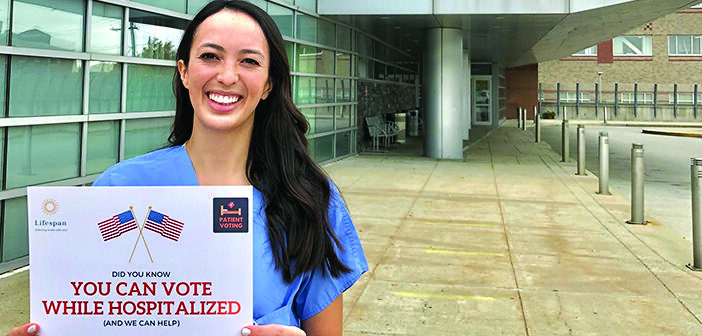An emergency physician helps hospitalized patients vote.
As the COVID-19 pandemic raged across the country last year, many states eased requirements for mail-in ballot requests so citizens could vote without fear of the virus.
In most states, though, one group of voters has always been able to cast absentee ballots: people unexpectedly hospitalized before Election Day. But few such patients—or their providers—know about this right.
Kelly Wong RES’21, MD, is working to change that. In the lead-up to the 2018 midterm elections, the emergency medicine resident founded Patient Voting, a nonpartisan organization that explains how to get an emergency absentee ballot in each state and even picks up and delivers the necessary forms for patients stuck in the hospital.
“This all came to my attention during the [2016] presidential election,” says Wong, who’s from Custer, SD. While a student at the University of South Dakota’s Sanford School of Medicine, one of her patients left the hospital against medical advice. “They wanted to go vote in the election,” she says. “It didn’t seem right that they had to choose between those two options.”
Neither Wong nor her colleagues were aware the patient didn’t, in fact, have to choose. And no wonder, she says: “Once I started investigating it, I was really shocked by how difficult it was to find this information.”
At Brown, Wong got funding from the Resident Education and Service Award grant to track down information about each state’s emergency absentee voting rules and create a website and fliers. EM colleagues and med students pitched in, and internal medicine residents translated step-by-step materials into Spanish. By last fall Patient Voting had volunteers in about 40 states.
It’s difficult to measure the impact of the group’s work, Wong says, because they don’t necessarily deliver ballots to patients. “Just getting the information out there is good enough,” she says. That, and keeping patients in the hospital until they’re well enough to go home.




